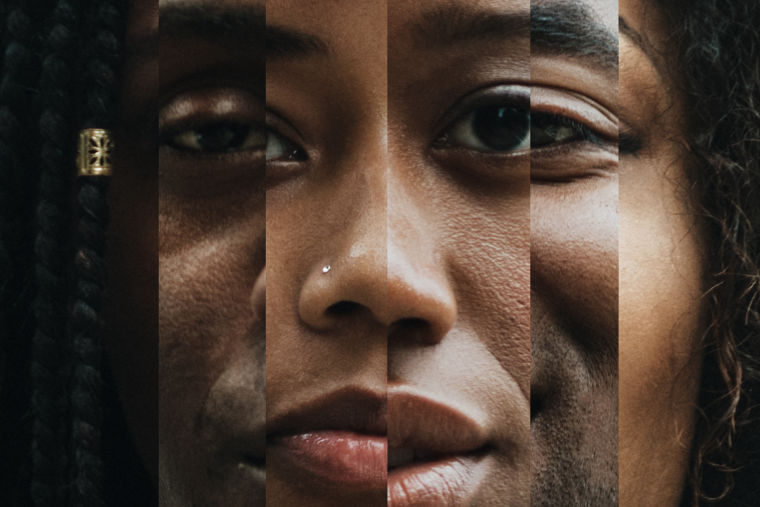You're standing at the edge of the Valgadena Bridge in Italy—175 meters above the ground—your heart pounding as the countdown begins: Three... Two... One... Jump! And you leap.
You've just ticked bungee jumping off your bucket list. But think about it: a stranger from a foreign country tied that cord to your ankle. You’ve never met him before. You didn’t inspect the gear. You found the company on the internet (the least trusted medium of all). You paid in full, upfront. And you even signed a waiver releasing them of any liability.
It’s the most irrational, blind trust imaginable—and yet, we do it willingly.
Now rewind to the prehistoric jungle: two humans cross paths, and the first instinct is fear, not faith.
So what happened?
How did we evolve from distrusting our neighbour to placing our lives in the hands of total strangers?
This is the extraordinary story of how trust was built—layer by layer—shaping civilizations, markets, religions, science, and algorithms.
Introduction: From Instinct to Infrastructure
Long before cities rose, temples stood, or brands took root—before we crafted religion or rationality—trust flickered only in its most fragile, instinctual form. To trust was to risk. For early hominins, survival was predicated on suspicion. The other was not a collaborator but a competitor for food, mates, and territory.
Fast forward to today: we routinely place our lives in the hands of surgeons, pilots, and even anonymous platform providers. We trust strangers to drive us across cities, unknown algorithms to approve our loans, and never met celebrities to sell us toothpaste. Somewhere along the arc of evolution, trust didn’t just emerge—it became central to how we function.
This article traces that extraordinary arc: from evolutionary biology and mythology to democratic governance, brand ecosystems, and decentralized protocols. It highlights how trust evolved, how it was repeatedly challenged, and why it is now the most strategic currency in the hands of marketing researchers and brand custodians.
I. Trust Before Humans: Survival Without Safety Nets
The roots of trust are deeper than civilization. In the evolutionary jungle, trust began not as a virtue but a vulnerability. Primatologist Frans de Waal observes that primates show early forms of cooperation and empathy—but almost exclusively within tight kin groups or social hierarchies (de Waal, 2006).
Social grooming among apes, for instance, serves not only hygienic functions but as a currency for alliance-building. But these behaviors are limited in scope and rarely extend to strangers. Trust, if it existed at all, was transactional and narrow in bandwidth.
One pivotal shift was the helplessness of human infants. As Sarah Hrdy (2009) explains, our long period of infant dependency required not just maternal care but cooperative breeding—siblings, uncles, and non-kin participating in childcare. This dependency seeded the first forms of extended trust beyond direct genetic ties.
II. The Pregnant Mother Problem: Why Evolution Demanded Help
As Homo sapiens evolved to walk upright, the narrowing of the birth canal resulted in babies being born earlier in their developmental cycle. Yuval Noah Harari (2011) calls this the “premature birth” problem: human babies are born essentially undercooked, requiring years of nurturing.
This pushed evolution toward social structures where caregiving extended beyond the mother. Cooperative parenting demanded proto-trust among group members, including non-relatives—a profound leap from instinctual protection to social reliance.
W.D. Hamilton’s theory of kin selection explains one pillar of this: individuals protect genetic relatives to enhance the survival of shared DNA. But Robert Trivers’ (1971) concept of reciprocal altruism added a second: humans began trusting non-kin based on expectations of future reciprocation—“I help you now, you help me later.”
Together, kinship and reciprocity laid the groundwork for expanding trust networks, setting the stage for larger groups, alliances, and eventually, communities.
III. The Cognitive Revolution: Lying, Language, and Myth
Around 70,000 years ago, Homo sapiens underwent what Harari (2011) describes as the “Cognitive Revolution.” With it came not just language, but the capacity for imagination, deception, and storytelling.
Robin Dunbar (1996) argues that language likely evolved to manage complex social dynamics via gossip. But this also introduced the possibility of falsehood. Harari adds that the unique genius of humans was their ability to “believe in things that do not exist”—from shared myths to moral codes to gods.
As deception grew, so did the need for collective anchors—stories that bound people through belief. These early mythologies helped mediate trust by aligning behavior through shared narratives. Gods began as imagined watchers—omniscient enforcers who rewarded virtue and punished deceit, even in the absence of human witnesses.
Trust was no longer just biological or transactional—it became metaphysical.
IV. Religion, Morality, and the Rise of Surveillance Gods
Religions institutionalized moral order. Whether it was the Egyptian Ma’at (goddess of truth and balance), the Vedic concept of Ṛta (cosmic order), or Abrahamic monotheism—deities offered a sense of omnipresent accountability.
Harari quips, “You can’t convince a monkey to give you a banana by promising bananas in monkey heaven.” But humans? Humans can be mobilized by invisible rewards and punishments.
These belief systems became early trust technologies. They regulated behaviour, reduced the cost of enforcement, and allowed large groups of strangers to cooperate under the gaze of imagined oversight.
Crucially, these systems also encouraged structured thinking. Belief in a rational, ordered universe—whether Vedic or Abrahamic—sparked early scientific inquiry. Religion, paradoxically, became the epistemic scaffolding for logic, law, and empiricism.
V. Law, Trade, and the Institutionalization of Trust
As city-states and empires emerged, trust needed new carriers. Written codes—like the Code of Hammurabi or Manu Smriti—began codifying acceptable behaviour. The rule of law made cooperation predictable.
Trade introduced a further wrinkle: dealing with strangers. To solve the problem of “delayed reciprocity,” civilizations began using symbolic artifacts—clay seals, tablets, ledgers—to hold trust. Eventually, this abstraction gave birth to money.
As Simmel (1900) observed, money is trust in portable form. It allowed for the decoupling of transaction from relationship. You didn’t need to know or like your trading partner—you only needed to trust the coin in your hand.
Trust moved from social bonds to civic infrastructure and abstract institutions.
VI. From Empire to Enlightenment: The Political Reframing of Trust
Colonial empires often couched exploitation in the language of civilization. The British Empire in India projected itself as a modernizer—despite India’s own rich traditions in mathematics, medicine, and urban planning.
In the 20th century, trust suffered systemic collapse. Nazi Germany used propaganda and pseudo-science to justify genocide—not just of Jews but also disabled children under the “T4 Euthanasia Program” (USHMM, 2020). Citizens who once trusted doctors, police, and government were betrayed by their institutions.
This led to a global reckoning. Thinkers like Locke and Rousseau reframed governance as a social contract. Democracies emerged as trust frameworks grounded in consent, participation, and accountability—where institutions serve because citizens allow them to.
Trust moved from divine right to civic legitimacy.
VII. The Rise of Professional Trust Architects
The industrial age brought scale—but also distance. As personal relationships diminished, intermediaries emerged to manage trust at scale.
Marketing research agencies were among the first to systematically map trust. The Commitment-Trust Theory of Morgan & Hunt (1994) showed that trust is not just a soft sentiment but a measurable precursor to loyalty.
Advertising agencies designed consistent narratives that mirrored interpersonal trust. Brands like Coca-Cola became more than products—they became emotional constructs. McCracken’s (1989) Meaning Transfer Model showed how celebrity endorsements created a halo of credibility around brands.
As risks rose, PR and reputation management firms stepped in. Johnson & Johnson’s handling of the 1982 Tylenol crisis remains a case study in brand recovery through transparency and empathy.
Research tools like NPS, Keller’s Brand Resonance Pyramid (2003), and Edelman’s Trust Barometer (2000s onward) transformed trust into a strategic asset. Today, marketers track, analyse, and model trust like they once did awareness or usage.
VIII. Algorithmic and Digital Trust: Platforms, Ratings, and Reviews
The digital age created new trust mediators. We now trust ride-share drivers with 4.8-star ratings more than a uniformed stranger. Airbnb, Uber, Amazon, and LinkedIn replaced traditional references with algorithmic credibility.
These systems operationalized trust. Algorithms now decide who we hire, date, or lend to. But these ratings are only as unbiased as the humans who design them.
For marketing researchers, this era demands a deeper understanding of “micro-trust” moments—those subtle touchpoints where consumer confidence is either built or broken.
IX. Trustless Trust: The Blockchain Revolution
Enter blockchain—a radical reimagination of trust as code. As Satoshi Nakamoto (2008) proposed, decentralized ledgers allow peer-to-peer transactions without centralized validation.
Tapscott & Tapscott (2016) call blockchain a “trust protocol.” It doesn’t eliminate trust; it relocates it—from human intermediaries to cryptographic consensus.
Harari, however, warns that even decentralized systems rely on trust: in code, in developers, in governance structures. Blockchain may be immutable—but its architecture is not beyond politics.
Still, for marketers, blockchain offers intriguing use-cases: verifiable supply chains, tokenized incentives, decentralized reviews, and transparent contracts. These force brands to back up their claims with provable commitments, not just good storytelling.
X. Final Thought: Reimagining the Metrics of Trust
Trust began as a biological imperative. It evolved into religion, then law, then brand architecture, and now algorithms. But the story is not linear—it’s recursive.
As AI, misinformation, and data breaches challenge institutional trust, marketers must ask: Are we measuring the right things? Awareness is easy. Loyalty is visible. But trust is quiet, cumulative, and fragile.
Perhaps it’s time to build a Trust Index—a multidimensional metric that evaluates a brand’s emotional resonance, ethical posture, and experiential consistency. Not as an add-on to brand tracking, but as its ethical core.
The most powerful innovation in the coming decade may not be AI or Web3—but the rediscovery of something ancient and human: the ability to trust wisely.
Bibliography
De Waal, F. (2006). Primates and Philosophers: How Morality Evolved.
Dunbar, R. (1996). Grooming, Gossip and the Evolution of Language.
Harari, Y. N. (2011). Sapiens: A Brief History of Humankind.
Hrdy, S. B. (2009). Mothers and Others: The Evolutionary Origins of Mutual Understanding.
McCracken, G. (1989). Who is the Celebrity Endorser? Cultural Foundations of the Endorsement Process. Journal of Consumer Research.
Morgan, R. M., & Hunt, S. D. (1994). The Commitment-Trust Theory of Relationship Marketing. Journal of Marketing.
Nakamoto, S. (2008). Bitcoin: A Peer-to-Peer Electronic Cash System.
Tapscott, D., & Tapscott, A. (2016). Blockchain Revolution.
US Holocaust Memorial Museum (2020). T4 Euthanasia Program.
Trivers, R. (1971). The Evolution of Reciprocal Altruism. Quarterly Review of Biology.
Yogesh Shendye
Founder and Managing Director at Factive ResearchYogesh Shendye is the Founder and Managing Director of Factive Research, an insights and analytics firm known for its innovative, unconventional approach to market research. With over 25 years of experience, he has led impactful work across Travel Retail, FMCG, Media, Telecom, Education, and the Consumer Services industry, including gaming, digital media, music streaming, and online education.
His commitment to innovation is reflected in his ESOMAR-published whitepaper, “Evaluating Soft Brand Advertising on Television Including Product Placement and In-Program Brand Exposures” (Asia Pacific 2004), which was nominated for the John and Mary Goodyear Award—a pioneering effort in measuring embedded brand communication.
Yogesh and his team at Factive have developed industry tools in pricing research, audience measurement for outdoor media and measurement for in-film placements.



